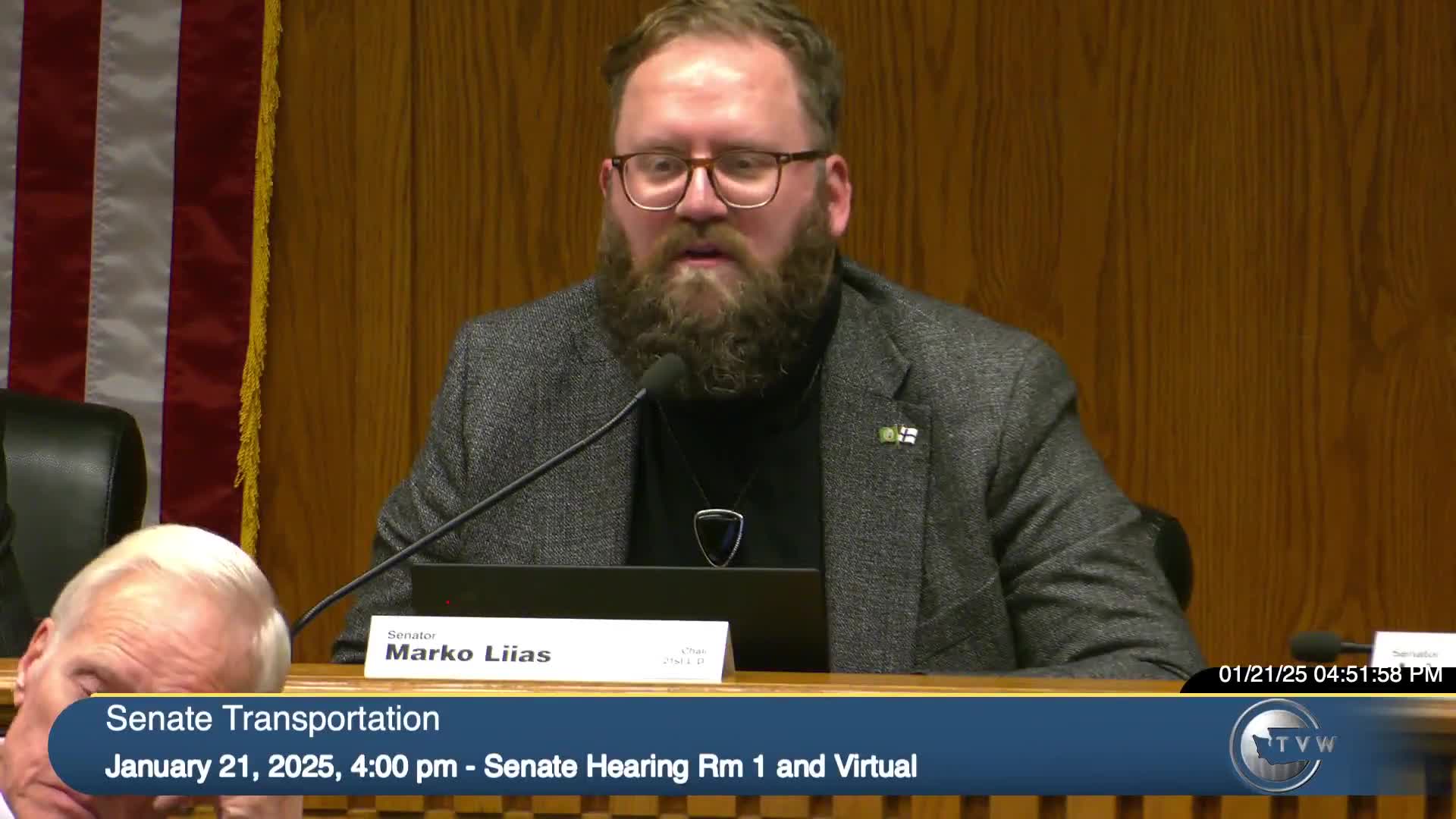WSDOT Local Programs: $635M in FHWA obligations last federal year, agency warns delivery strain amid program growth
January 21, 2025 | Transportation, Senate, Legislative Sessions, Washington
This article was created by AI summarizing key points discussed. AI makes mistakes, so for full details and context, please refer to the video of the full meeting. Please report any errors so we can fix them. Report an error »

Jay Dry, director of Local Programs at the Washington State Department of Transportation, told the Senate Transportation Committee on Jan. 21 that WSDOT Local Programs obligated about $635 million in Federal Highway Administration funds and $186 million in state transportation funds in the most recent federal fiscal year and now oversees roughly 1,400 active projects statewide.
Program scale and delivery
Dry said FHWA funds comprised about two‑thirds of Local Programs’ portfolio, with the federal bridge program, safety improvement programs and discretionary grant administration among core responsibilities. He said the federal bridge program has grown under the Bipartisan Infrastructure Law and that Local Programs plans another ~ $100 million bridge call in 2025. Dry urged the committee that the scale of capital obligations has expanded dramatically but agency staffing has not kept pace: Local Programs is “3 to 4 times the size it was four years ago” in funded program dollars while organizational size remains similar, creating delivery challenges.
Bridge and safety efforts
Dry described Local Programs’ role in ensuring local bridges meet federal standards and credited recent bridge‑call funding with enabling more replacements and preventive maintenance. He described safety funding of roughly $80 million per biennium on the agency side and approximately $70 million per biennium in federal safety funds that the agency distributes between cities and counties. Dry said safety calls are oversubscribed and that demand for improvements—lane‑departure mitigation, intersection upgrades and vulnerable‑user measures—far outpaces available dollars.
Newer programs: fish barriers, video analytics, civilian intervention
Dry highlighted the PROTECT program (federal) and coordination with the Fish Barrier Removal Board, noted a nascent video‑analytics traffic‑conflict screening pilot (Bellevue, Issaquah selected), and described a civilian intervention program to address nonmoving violations and provide non‑punitive community interventions in partnership with nonprofits (BlueBridge Alliance and AART). The civilian intervention initiative supports repair vouchers, "fix‑it" assistance and community workshops to address safety and compliance concerns without criminal penalties.
Ending
Dry closed by urging awareness of Local Programs’ expanded capital role and delivery pressures: "Our programs have grown very dramatically in the last 4 years...it is not sustainable for us to maintain delivery at the current level that we're at," he said, and asked for consideration of administrative capacity alongside capital appropriations.
Program scale and delivery
Dry said FHWA funds comprised about two‑thirds of Local Programs’ portfolio, with the federal bridge program, safety improvement programs and discretionary grant administration among core responsibilities. He said the federal bridge program has grown under the Bipartisan Infrastructure Law and that Local Programs plans another ~ $100 million bridge call in 2025. Dry urged the committee that the scale of capital obligations has expanded dramatically but agency staffing has not kept pace: Local Programs is “3 to 4 times the size it was four years ago” in funded program dollars while organizational size remains similar, creating delivery challenges.
Bridge and safety efforts
Dry described Local Programs’ role in ensuring local bridges meet federal standards and credited recent bridge‑call funding with enabling more replacements and preventive maintenance. He described safety funding of roughly $80 million per biennium on the agency side and approximately $70 million per biennium in federal safety funds that the agency distributes between cities and counties. Dry said safety calls are oversubscribed and that demand for improvements—lane‑departure mitigation, intersection upgrades and vulnerable‑user measures—far outpaces available dollars.
Newer programs: fish barriers, video analytics, civilian intervention
Dry highlighted the PROTECT program (federal) and coordination with the Fish Barrier Removal Board, noted a nascent video‑analytics traffic‑conflict screening pilot (Bellevue, Issaquah selected), and described a civilian intervention program to address nonmoving violations and provide non‑punitive community interventions in partnership with nonprofits (BlueBridge Alliance and AART). The civilian intervention initiative supports repair vouchers, "fix‑it" assistance and community workshops to address safety and compliance concerns without criminal penalties.
Ending
Dry closed by urging awareness of Local Programs’ expanded capital role and delivery pressures: "Our programs have grown very dramatically in the last 4 years...it is not sustainable for us to maintain delivery at the current level that we're at," he said, and asked for consideration of administrative capacity alongside capital appropriations.
View full meeting
This article is based on a recent meeting—watch the full video and explore the complete transcript for deeper insights into the discussion.
View full meeting
